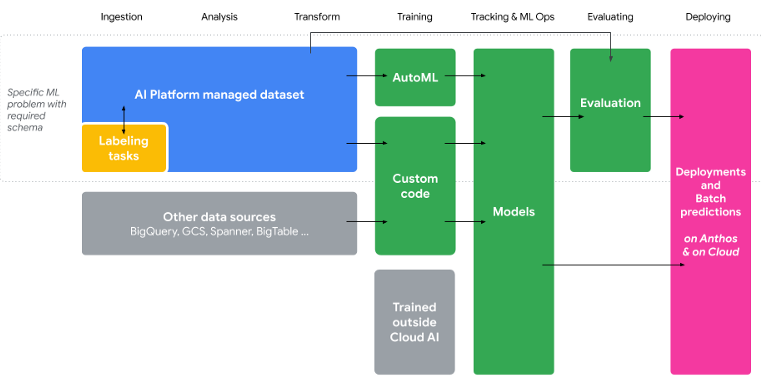|
||||||||
AutoML - Python Automation and Machine Learning for ICs - - An Online Book: Python Automation and Machine Learning for ICs by Yougui Liao - |
||||||||
| Python Automation and Machine Learning for ICs http://www.globalsino.com/ICs/ | ||||||||
| Chapter/Index: Introduction | A | B | C | D | E | F | G | H | I | J | K | L | M | N | O | P | Q | R | S | T | U | V | W | X | Y | Z | Appendix | ||||||||
================================================================================= AutoML (Automated Machine Learning) platforms, such as Google Cloud AutoML, are designed to automate the process of applying machine learning models. These platforms can select the best model, tune hyperparameters, and even handle feature selection to some extent. IT personnel, who may not be machine learning experts but have a solid technical background, can use AutoML to implement machine learning solutions efficiently. This allows them to focus more on integrating these solutions with existing IT infrastructure rather than the intricacies of model training and tuning. One of the main benefits of using an AutoML workflow is the reduction in the time it takes to develop trained models and assess their performance. Traditional machine learning processes often involve manual and time-consuming tasks such as feature engineering, model selection, hyperparameter tuning, and performance evaluation. AutoML tools streamline and automate these tasks, allowing users to leverage machine learning without extensive expertise in the field. This automation can significantly accelerate the model development process, making it more accessible and efficient for individuals and organizations. It also helps in democratizing machine learning, enabling a broader range of professionals to harness the power of advanced analytics without spending extensive time on intricate details of the modeling pipeline. Vertex AI is a great platform to build some templates for machine learning, which is Google Cloud’s unified artificial intelligence platform that offers an end-to-end ML solution, from model training to model deployment. We can add a lot of data (more than 1000GB) and it's scalabe.
Figure 4113. Vertex AI providing a unified set of APIs for the ML lifecycle. [1] Google AutoML employs a variety of techniques to handle feature selection and model optimization, although the exact specifics of these methods are not fully detailed in public documentation due to proprietary reasons. Generally, AutoML systems, including Google's, use advanced algorithms to automate much of the model-building process, including feature selection. Techniques which are typically used in AutoML for feature selection are:
============================================
[1] Diagram courtesy Henry Tappen and Brian Kobashikawa.
|
||||||||
| ================================================================================= | ||||||||
|
|
||||||||

